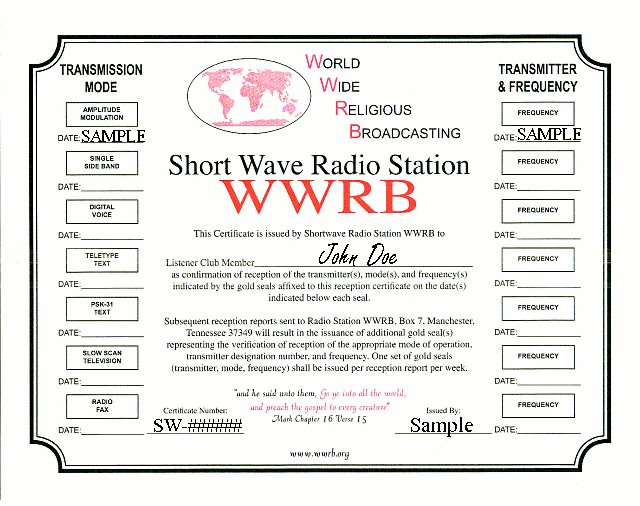As
is so well known, the United States of America entered active participation in
the events of World War 2 immediately following the dramatic and devastating
attack on Pearl Harbor in Hawaii on Sunday morning December 7, 1941. Thus, the two largely separate conflicts in
Europe and mainland Asia were combined and they escalated into what became
another World War.
As part of the American war effort, the
American government took over the control of all shortwave broadcasting
stations in the continental United States just a year later, in November 1942.
Back at that time, radio historians
tell us that Germany operated a total of 68 shortwave broadcasting
transmitters, both within Germany itself, and also in other countries of
continental Europe that were under the Third Reich at the time. At the same time, Japan was operating 42
shortwave broadcasting transmitters both within Japan itself, and also in the
countries of Asia that were under the Greater Japanese Empire.
Over in England at the onset of the
European war in September 1939, the BBC operated just 8 shortwave transmitters,
all located at Daventry. However, the
BBC quickly implemented a program of rapid expansion, and by the time the
United States entered the war at the end of 1941, the BBC now operated a total
of 32 shortwave transmitters at half a dozen widespread locations.
When the American government took
over the control of all of the shortwave broadcasting stations in the
continental United States in November 1942, there were just a dozen shortwave
broadcast transmitters available.
However in addition, there were four other companies whose several low
powered and medium powered communication transmitters throughout the country
could be available if needed.
Now back at that time (1942), there
were just two shortwave broadcast transmitters on the air on the west coast of
the United States; KGEI with 50 kW at Belmont, and the new KWID at Islais
Creek, both in suburban San Francisco in California. The United States government quickly
implemented a rapid growth two-part program; the construction of new shortwave
stations with new transmitters, and the
usage of existing communication transmitters already on the air.
The Voice of America made its first
radio broadcast on February 1, 1942 with a program in the German language that
was on relay from shortwave transmitters operated by the BBC in England. A controlling organization, OWI the Office of
War Information was organized on June 13, 1942, and they established a west
coast office at 111 Sutter Street in San Francisco. This was the fourth tallest building in San
Francisco and it had previously housed the West Coast headquarters for the NBC
radio company.
As the broadcasts from the
California shortwave stations began to increase, so did the flow of reception
reports from distant listeners. At
first, no QSLs were available, but when the influential Arthur Cushen in Invercargill
New Zealand wrote a letter of explanation to OWI, they then prepared a generic
QSL card design that could be used to verify all of the West Coast VOA
shortwave stations.
The design of the new OWI QSL card
was in the patriotic colors, red white and blue. The card was thin white card with a large
block of blue on the left side of the card showing a diagonal portion in white
in which the station callsign was printed in large blue letters. Below the blue callsign panel was a red
section that showed the country name, United States of America. The QSL text was printed in the same blue
color in a panel on the right hand side of the card.
Over
the years, OWI must have issued a huge number of these famous red white and
blue QSL cards. Research into an
existing quantity of these OWI QSL cards indicates that there were at least
four different print runs, in addition to the different callsign
identifications.
The first print run for the standard
card identifies the specific callsign for each station, one station per
card. A second print run shows a blank
area for the callsign, thus allowing the callsign to be inserted with a
typewriter. A third print run is very
similar, though with the QSL text in a different print font. Then there were two different QSL cards
similar in design but prepared specifically for the two stations KWID and
KWIX.
Usually there was just one callsign
on each card, though initially when two transmitters were tied together
electronically, then both callsigns were listed on the one card. For example, two transmitters at Dixon in
California were tied together as KNBA-KNBC and another two as KNBI-KNBX . Likewise for KCBA-KCBF in Delano, also in California.
When the shortwave communication
stations were carrying a relay of VOA programming OWI issued QSL cards
verifying these broadcasts too, such as KWU and KWV, and also KES2 and KES3,
all in Bolinas. Even though the 100 kW
KRHO was installed in Hawaii and not in California, yet OWI also issued QSL
cards in the same red white and blue pattern for those broadcasts.
At the time when these OWI shortwave
stations were on the air (1942-1945), there was of course a violent war in
progress in the Pacific. Mail delivery
by ship between the United States and Australia and New Zealand was slow and
irregular.
In addition, these QSL cards were
subject to censorship. For example, a
May 1943 QSL card verifying station KWV and addressed to Jack Fox in New
Zealand shows a rubber stamp impression, stating that it was examined by Censor
No 10177. A June QSL card in the same
year (1943) verifying station KWY and addressed to Max Mudie in South Australia
shows a rubber stamp impression from the same Censor No 10177.
Over the years, several million QSL
cards have been listed for sale on Ebay, yet as far as is known, not one of
these wartime red white and blue OWI QSL cards has ever appeared on the
list. It would be suggested that if one
of these famous red white and blue cards is ever listed for sale, it would
command a very high price.
That’s as far as we can go in this story today, and on another
occasion, we will tell the story of some
of the shortwave stations whose broadcasts were verified by the now famous red
white and blue OWI QSL cards.
(AWR-Wavescan/432)













